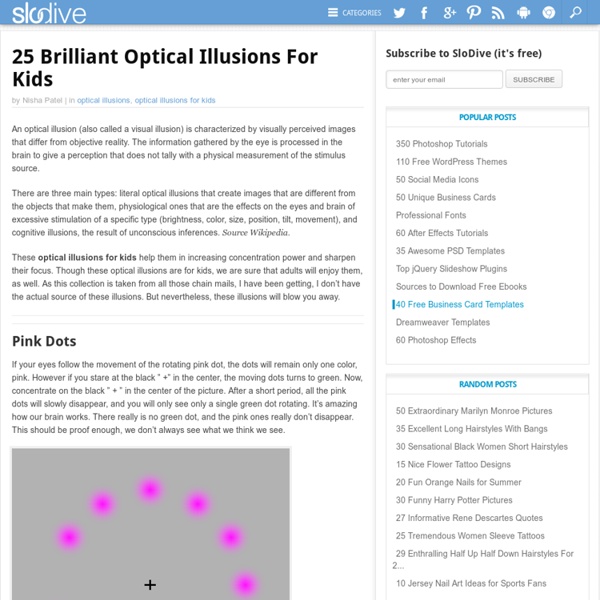how it's made : comment remplir des tubes de dentifrice
Realia
Realia Submitted by admin on 6 April, 2011 - 14:13 ‘Realia’ in EFL terms refers to any real objects we use in the classroom to bring the class to life. In this tip I’d like to offer a few suggestions for activities using realia and to consider why we may want to bring things into the class. Why use realia in class? A second example would be if you are going to teach some functional language for asking for the timetable for a train. Here is a selection of activities involving realia. Tourist informationGather some city/town maps from the tourist information bureau wherever you are. These are just a few ideas to get you started. Further r This article will give you some wacky ways to use realia in the classroom. More about realia. By Jo Budden Printer-friendly version
a thunk
Crossword Puzzle Maker
You must have an OLD browser. The old crossword maker doesn't allow all of the new features like cool fonts, adding images, shadows, special colors, and much more coming in the furture like saving, and being playable online. You can upgrade your browser to IE 9+ or better yet, get the Google Chrome browser and enjoy all of those great features. Not convinced? You can go to the old version by clicking choosing it below. 2 reasons crosswords will not generate: 1. 1. Take the following example word list: "home, cat, dog". A slightly different impossible list: "home", "dog", "lizard" - all 3 have letters that they share! When you add a bunch of words, the chance for it being an impossible can increase (depending on many factors). 2.
Paula Zuccotti documents the things people touch in a day.
Paula Zuccotti How many things do you touch in one minute? How about an hour? Zuccotti—a designer and trends forecaster who founded the Overworld, a consultancy agency that specializes on the interaction between culture and technology—was curious to learn more about how our daily interactions come to define ourselves and what she might be able to learn about the things we “need, appreciate, consume, or simply touch.” “I was amazed at the honest X-rays from our everyday lives that emerged from the photos,” she wrote via email. All of the participants in the project were required to record everything they touched on notepads or their phones. “They gathered all the objects together, sent me the list upfront, and we together ran through everything making sure that nothing was forgotten and that the story of everyone’s day was completed chronologically,” she wrote. “I felt the urge to capture our relationship with objects as it stands today.
Brain Teasers Answer
Noone understands Repeat after me Mandarin orange o er t o Painless operation One foot in the grave faredce Red in the face cotaxme Income tax. k kc cu ut ts sword word word word Too stuck up for words insult + injury Adding insult to injury no ways it ways No two ways about it rys Syrup gesgsegggegsgges Scrambled eggs basleepg Down sleeping bag upside Upside down eeeeeeeeeec Tennessee you cont ol r You are out of control Endless love Left out Field Out in left field 7-Up Cans acriml Criminal All in all i4i An eye for an eye Death Valley poFISHnd Big fish in a little pond Odds and ends ch poorri Take from the rich, give to the poor. Breaking a custom uPLATm Platinum Pot O O O O O O O O Potatoes bad bad Too bad Parallel bars I'M you I'm bigger than you DribbleDribble Double Dribble kneelight light Neon lights BeatingBeating Bush BeatingBeating Beating around the bush i idark Dark under the eyes longdo Long overdue Count on us Y Y guy guy Wise guys you the past Put 'the past' behind 'you' chawhowhorge "Who"'s in "charge" Math The The aftermath ONCE4:56pm and
Entre chien et loup
Entre chien et loup Vous êtes 1.506.000 auditeurs à écouter cette émission (elle a été classée 1ère en audience cumulée parmi toutes les stations nationales et 1ère parmi les stations généralistes - résultats Médiamétrie sur la période septembre-octobre 2016) Merci de votre fidélité Articles scientifiques: Frantz LA, Mullin VE, Pionnier-Capitan M, et coll. Livre: Homère. Programmation musicale: Laura Cahen - Froid - Le PhonographeWilliam Z Villain - Anybody gonna move - Normandeep Blues RecordsSubmotion Orchestra / Billy Boothroyd - More than this - Counter Records
A Social Experiment Of Giving And Taking What You Need
Thought Experiments
1. Common Features of Thought Experiments Thought experiments are conducted for diverse reasons in a variety of areas, be it in the moral, mathematical, or natural realm (see, e.g., De Mey, 2006). We leave aside those that simply entertain. Some thought experiments fulfil a specific function within a theory (see Boorsboom et al., 2002). Others are executed because it is impossible to run the experimental scenario in the real world (see Sorensen, 1992, pp. 200–202). Theorizing about thought experiments usually turns on the details or the patterns of specific cases. This example nicely illustrates many of the most common features of thought experimenting: we visualize some situation that we have set up in the imagination; we let it run or we carry out an operation; we see what happens; finally, we draw a conclusion. Figure 1. One possible answer is to claim that we possess a great store of “instinctive knowledge” picked up from experience. Figure 2(a) and 2(b) “How will it move?” 2. 3. 4.
divergent thinking exercise



